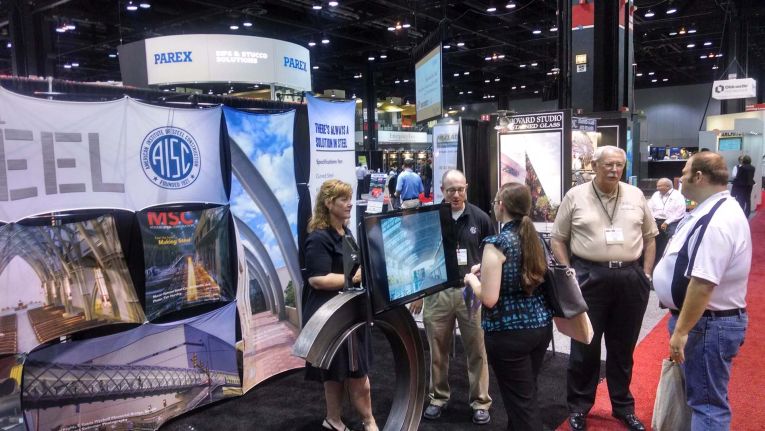
“The idea of rethinking your space is essential for a city today,” said Chicago Mayor Rahm Emanuel in his keynote address at the 2014 AIA Convention in Chicago last month (at which AISC was an exhibitor).
Emanuel shared top keynote billing with two prominent Chicago designers—architect Jeanne Gang and artist Theaster Gates—and talked about next year’s inaugural Chicago Architecture Biennial (an international forum for the exploration of new ideas in architecture) as well as the city’s position as an influential leader in architecture.
“People from around the world are now migrating back to cities,” the mayor said. “In the same way that 100 years ago Chicago was at the epicenter of modern architecture, we are now at the epicenter of rethinking livable, sustainable and beautiful cities—and your work is essential to think through that effort.”
The idea of ‘rethinking’ architecture seemed to be a running theme throughout the AIA show, which attracted nearly 20,000 attendees this year, according to show organizers.
During the show, AIA announced the availability of its “AIA Foresight Report,” which highlights key trends in the architecture marketplace and their impact on business and growth. One key trend is that design firms are exploring alternative ways to attract and retain key talent, including flexible work plans (hours and location) that allow for better work-life balance, improved work environments, profit sharing programs, fringe benefits and ongoing education. Another key finding was that crowdfunding and crowdsourcing signal major changes in the role of users and clients in the design process. The report also points out that more than half of design firm leaders in North America expect growth for the next year, and the Bureau of Labor Statistics anticipates nearly 19,000 architecture jobs will be added to the U.S. economy between 2012 and 2022, which represents a greater-than-average growth rate of 17%.
AIA also announced the release of seven updated documents in the AIA Contract Documents Design-Build family. These documents are among the most frequently used documents of the entire AIA portfolio and are preferred by the industry at large for use on commercial design-build projects.
“These updated design-build documents strengthen the relationship between the owner and design-builder by fostering greater collaboration and increased communication between the parties,” said Deborah DeBernard, the AIA’s vice president and general manager of AIA Contract Documents.
The main focus of the AISC’s booth was curved steel (click on the image to enlarge), which had architects reimagining their designs with the flexibility and creativity that steel brings to a project. A wide-flange curved steel sculpture provided by AISC member Chicago Metal Rolled Products was a big draw, spurring questions about how steel can be bent. And the AISC-sponsored session “Innovative Applications in Architecturally Exposed Structural Steel (AESS)” was packed with attendees. Terri Meyer Boake, professor at the School of Architecture at the University of Waterloo, Cambridge, Ontario, Canada, talked about the many advantages of AESS, such as how it eliminates the need for cover systems due to its modern aesthetic.
You can find information about curved steel and AESS on AISC’s website or by contacting AISC’s Steel Solutions Center at 866.ASK.AISC or solutions@aisc.org.